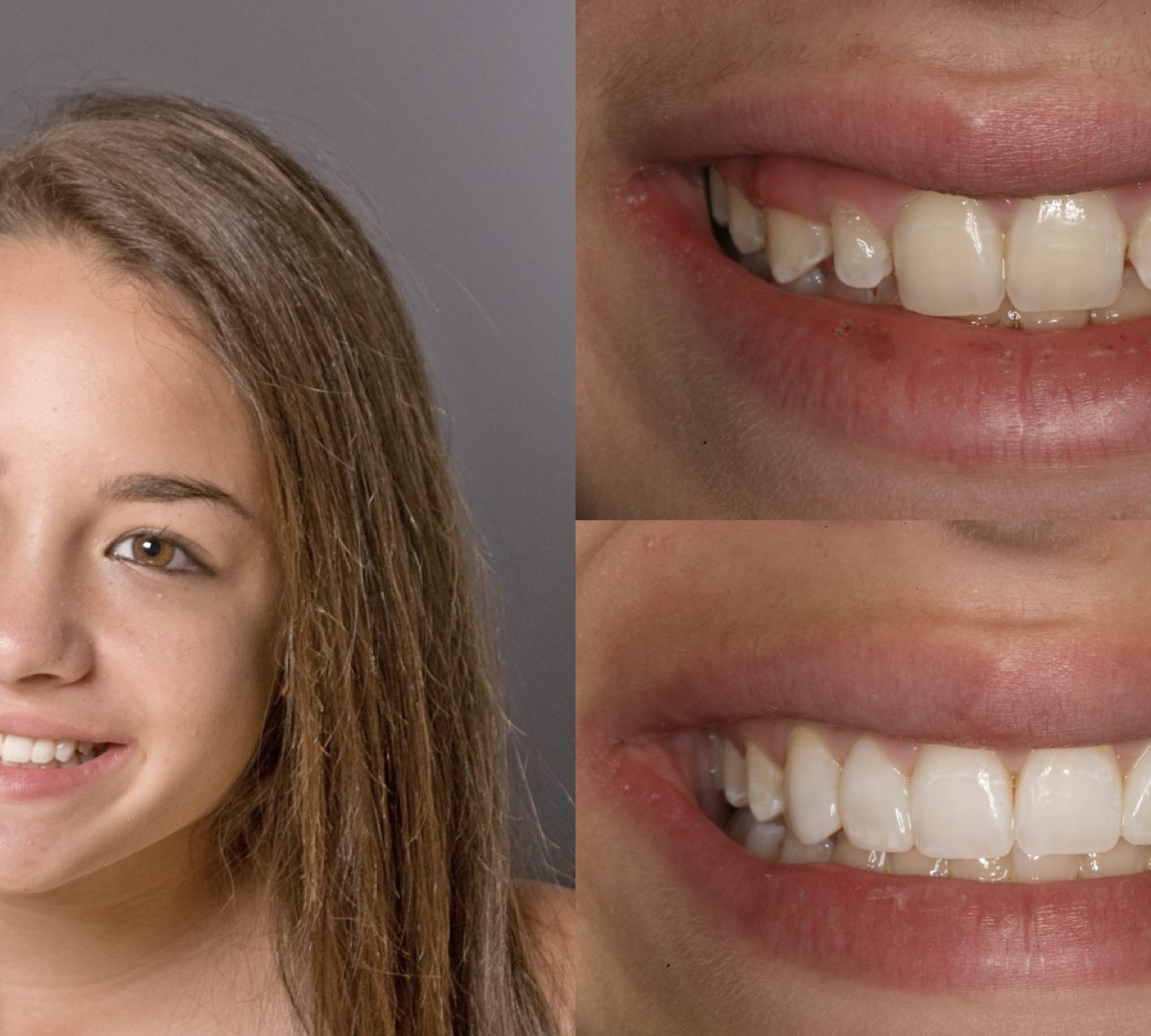In dentistry, bonding is used to describe a variety of procedures that use tooth-colored filling material to repair or restore a tooth or many teeth. Composite resin is the name given to this material, which is also commonly referred to as plain composite. Because the composite substance attaches to the natural tooth structure, we call it bonding.
In order to restore some faults in the most conservative and aesthetic manner possible, we use composite materials. Tooth structure isn’t removed in great quantity when dental bonding for small teeth. Generally, enamel needs to be just slightly reshaped or roughened in order to accommodate composite bonding.
What Is Dental Bonding?
Composite resin, colored to match your natural tooth color, is placed on the surface of your teeth in dental bonding, a safe and economical cosmetic dentistry process. In order to solidify the putty-like material, a special curing light is used to “bind” the material to the tooth. To complete the look, polish is applied to the bonding material to give it a mirror-like finish.
With dental bonding, there are no long-term effects or substantial tooth preparation required, unlike other cosmetic dental procedures. In most cases, the process takes less than an hour to perform and is completely painless. Because the treatment is painless and doesn’t necessitate the use of anesthetics, Also, there is no need to remove any of the tooth’s structure for dental bonding.
It is possible to utilize composite bonding to repair chips in the front teeth, fix minor gaps between teeth, and totally cover (or veneer) the front of a tooth for aesthetic purposes. Regardless of why you’re using composite bonding, there are a few things to keep in mind.
Bruxism
The medical name for teeth grinding and clenching is bruxism. It’s a prevalent problem among adults in the United States of America. The jaw muscles must be squeezed quite hard in order to achieve this effect. These powerful energies are absorbed by the teeth.
If you grind your teeth, you risk breaking, chipping, or otherwise damaging a healthy, natural tooth. As a result, bonding composite material to the tooth is vulnerable to cracking, chipping, and breaking.
It’s important to let your dentist know if you clench or grind your teeth at night and to make a commitment to using a nightguard. To avoid detrimental bite forces on the composite bonding, this will be done.
Ask your dentist if you don’t know if you clench or grind your teeth. The dentist is usually able to identify if you have this tendency by looking at your teeth. Then they’ll be able to provide you with advice on how to keep your composite bonding safe.
Desired Color
The composite filling material, as previously mentioned, has a natural tooth color. In order to match your tooth’s color, composite resins come in a number of shades.
You should think about the color of your teeth carefully before having composite glued to them. You needn’t worry about anything if your teeth are already the colour you want.
You should avoid having composite bonding done if there is even a remote possibility that you might desire to whiten your teeth in the future.
It is impossible to whiten composite. Bonding a front tooth and then bleaching them would leave you with a dissatisfying result. The colour of the bonding would not change, but the surrounding teeth would get whiter. As a result, it would no longer fit completely, and the bonding would be more noticeable.
Before having any cosmetic dental treatment done if you wish to whiten your teeth, do so.
After a two-week waiting period, you can proceed with bonding if you have achieved your preferred tooth colour. In order to avoid damaging the link between composite and tooth enamel, a two-week waiting time is required. Your dentist will use the bonding substance to match the new, brighter colour of your teeth.
Ideal Shape
Your dentist can precisely duplicate the contour of your natural tooth with composite dental bonding for small teeth. We want you and your dentist to be the only ones who know about this dental work. Suppose you don’t like your teeth’s natural shape.
Composite bonding may not be an option if you want to alter a particular tooth’s form, rotation, or alignment. Be sure to discuss your goals with your dentist before getting started.
In these situations, it’s possible that bonding can still help you achieve your goals.
Pre-operative planning and further tooth structure removal are frequently required when changing the contour of a tooth. This is why the intended shape of your teeth should be taken into account before proceeding with bonding.
Parafunctional Habits
A parafunctional habit is defined as the habitual usage of anything that does not serve its original purpose. Aside from chewing and speaking, this entails using the teeth for something other than these two purposes.
To open or tear anything with your teeth is a common parafunctional dental habit. Bobby pins are frequently held and opened by hairstylists using their teeth as a grip. To cut fishing lines, fishermen have been known to use their teeth. Habits like this one are a waste of time.
Composite bonding necessitates the cessation of parafunctional habits. If you don’t, you risk chipping or breaking the material. In order to repair the harm, you’ll have to go back to the dentist.






